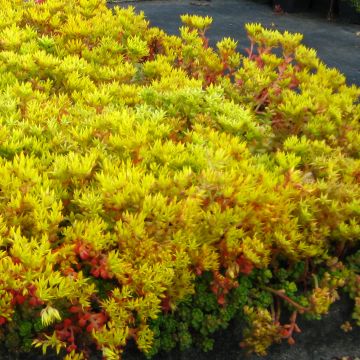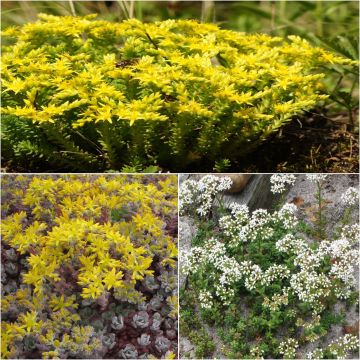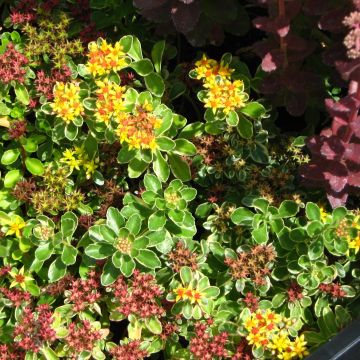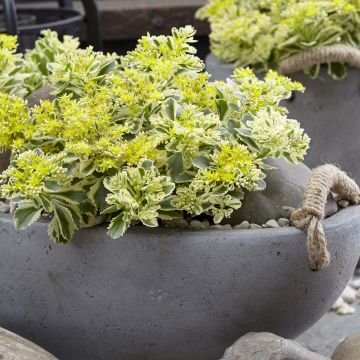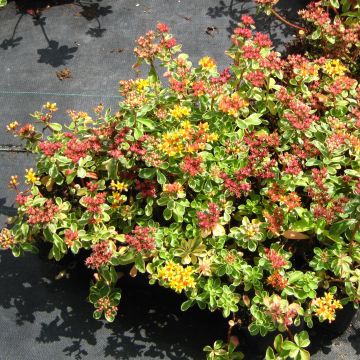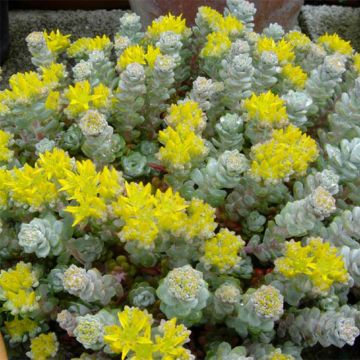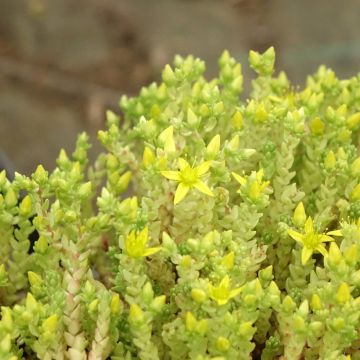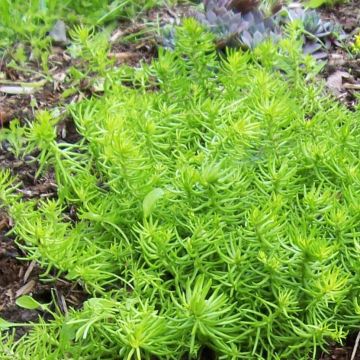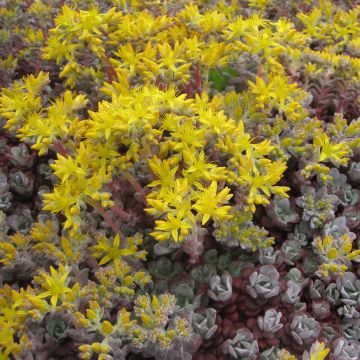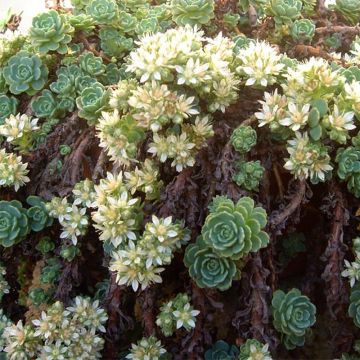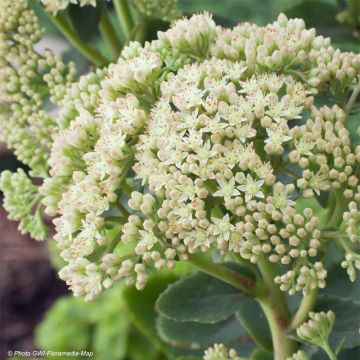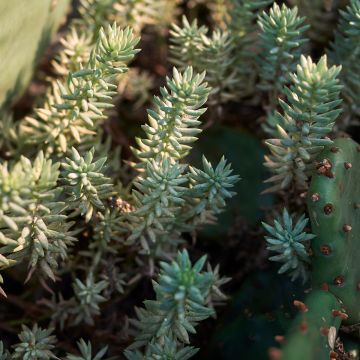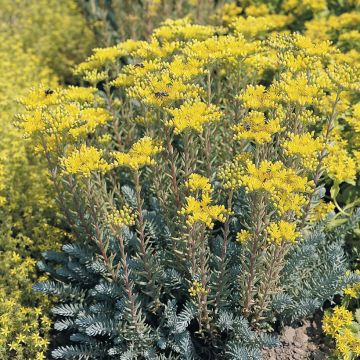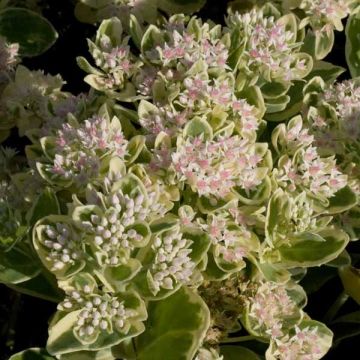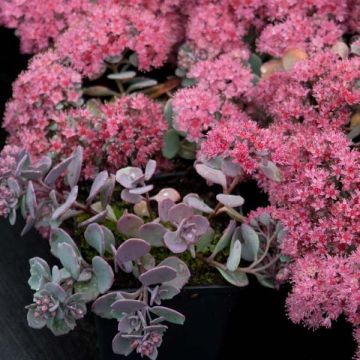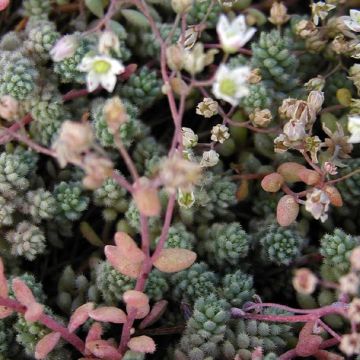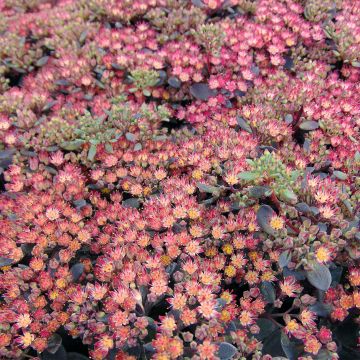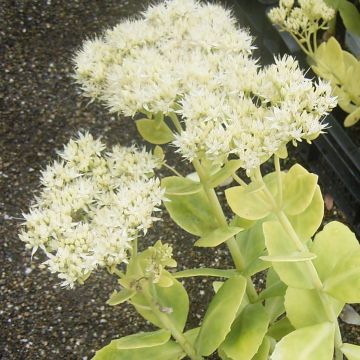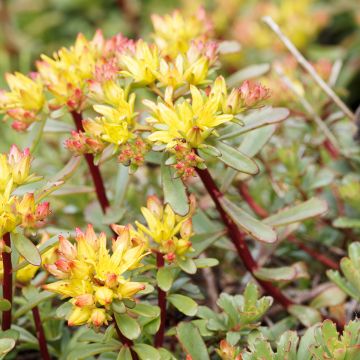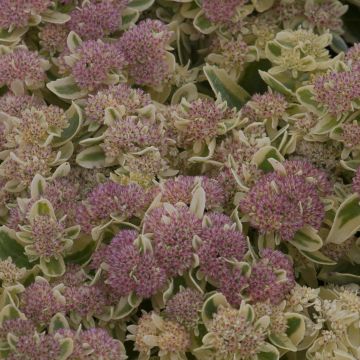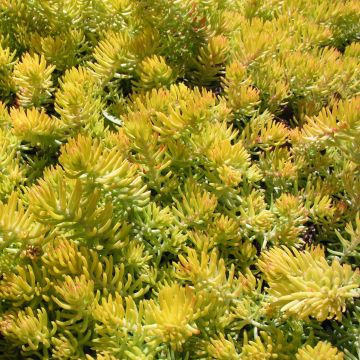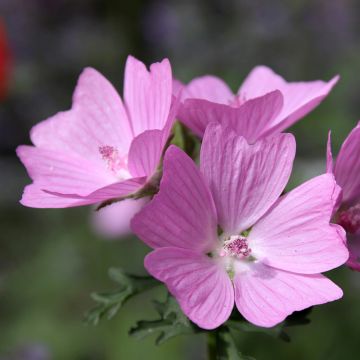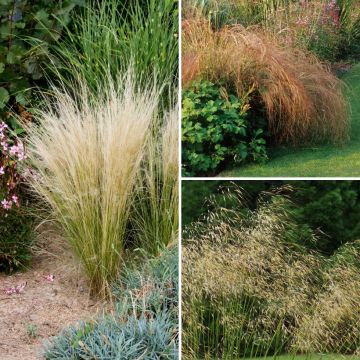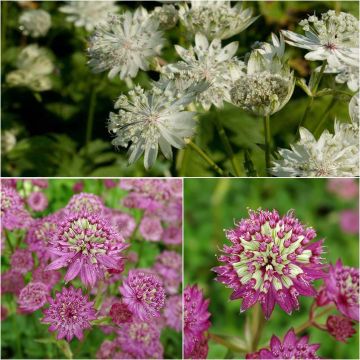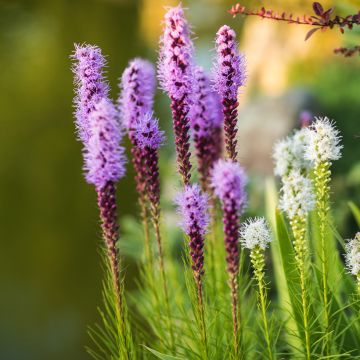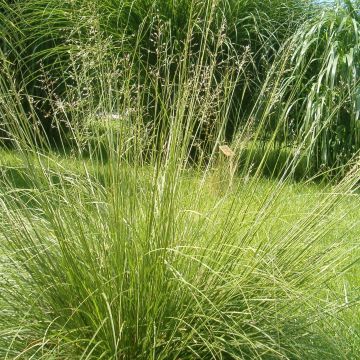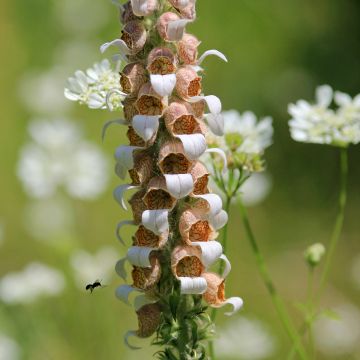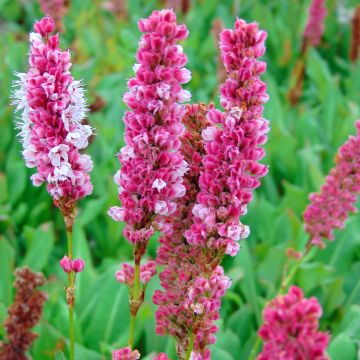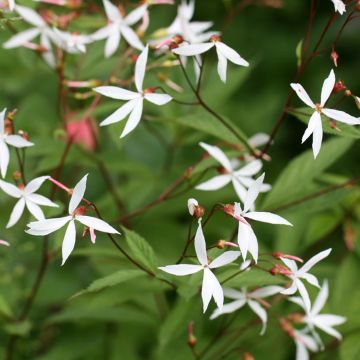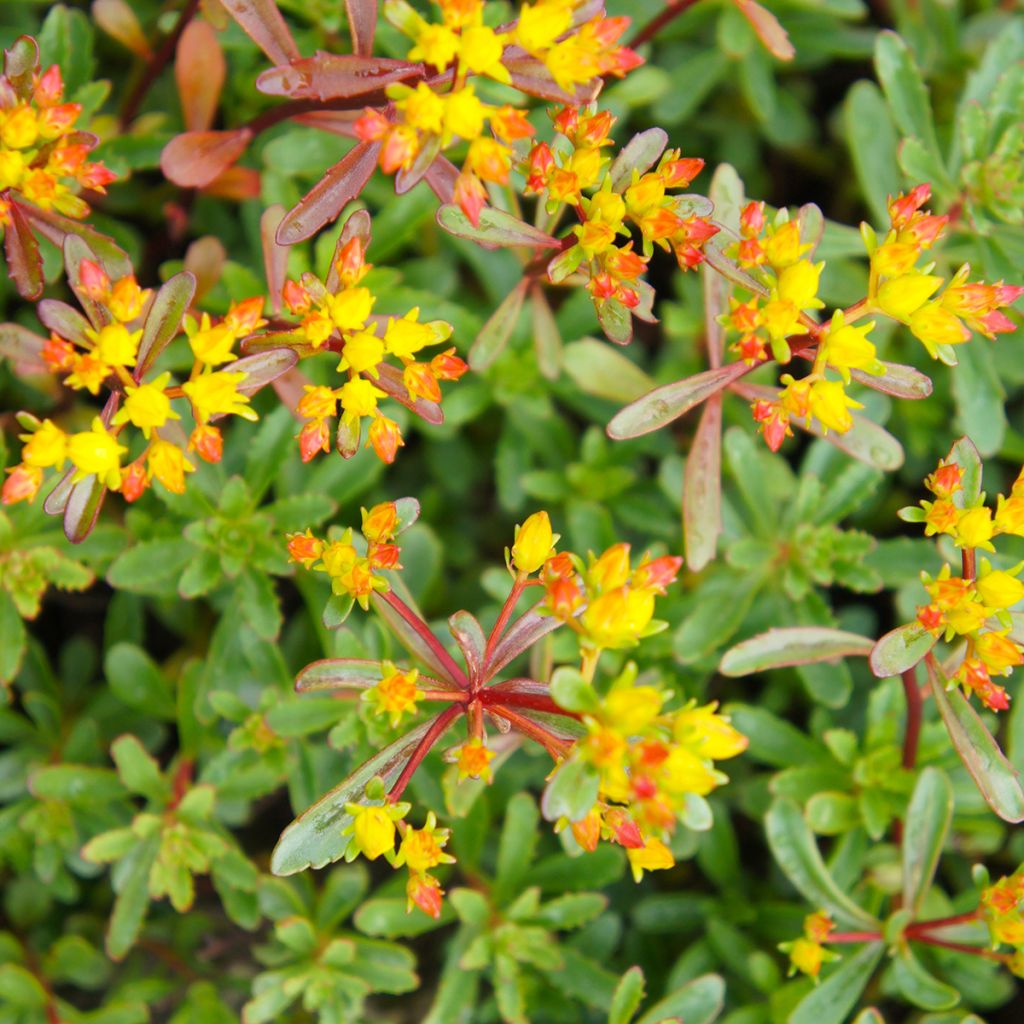

Sedum kamtschaticum var. middendorffianum var. middendorffianum
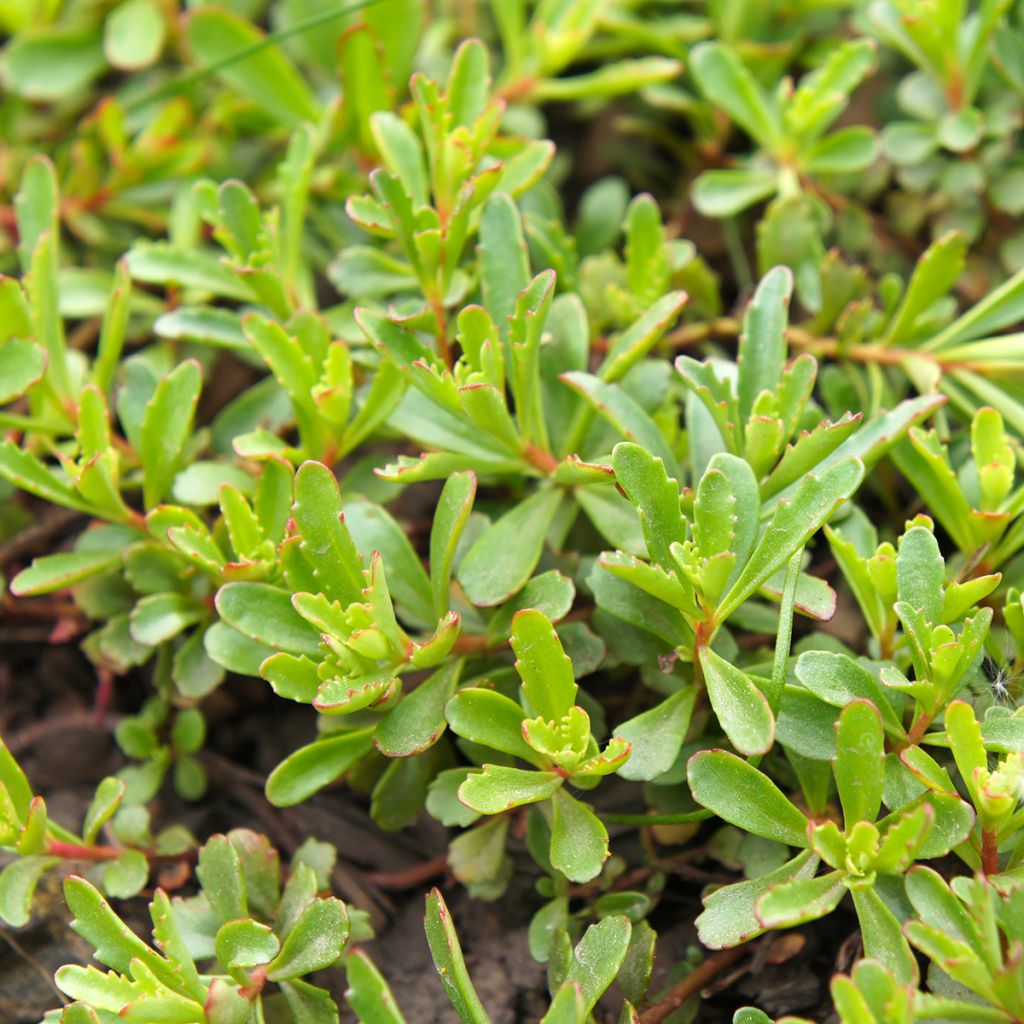

Sedum kamtschaticum var. middendorffianum var. middendorffianum
Sedum kamtschaticum var. middendorffianum var. middendorffianum
Sedum kamtschaticum var. middendorffianum var. middendorffianum
Orange Stonecrop, Russian Stonecrop
Why not try an alternative variety in stock?
View all →This plant carries a 12 months recovery warranty
More information
We guarantee the quality of our plants for a full growing cycle, and will replace at our expense any plant that fails to recover under normal climatic and planting conditions.
From €5.90 for pickup delivery and €6.90 for home delivery
Express home delivery from €8.90.
Does this plant fit my garden?
Set up your Plantfit profile →
Description
The Sedum kamtschaticum subsp. middendorffianum, now named Phedimus middendorfianus subsp. middendorffianus is a subspecies of the Kamchatka Stonecrop. This small succulent plant develops leaves arranged in rosettes, elongated and narrow, channelled and dentate, on upright stems. The small star-shaped flowers, yellow in color, appear in summer. Its semi-evergreen foliage turns reddish under the effect of the sun, as well as in spring and autumn. This Sedum can be planted in dry borders, scree gardens, rockeries, and pots.
The Sedum kamtschaticum subsp. middendorffianum is a succulent perennial plant native to China, Japan, Korea, and Russia. It grows in rocky crevices and stony forest soils, in arid conditions and fairly extreme temperatures in summer and winter. This subspecies forms a spreading cushion reaching a height of 15 cm. Its upright stems bear long and narrow, leathery leaves, ranging in color from green to brownish-purple. The stems branch near the base and can reach up to 30 cm in length. The leaves measure up to 2.5 cm in length and 0.5 cm in width, they are channelled and have a serrated edge in the upper half. They take on various shades depending on the climatic conditions and can even turn red. Its flowering is charming and delicate. Its inflorescences, in miniature corymbs, are composed of multiple golden yellow flowers, star-shaped, with orange or violet anthers, measuring up to 1 cm in diameter. They appear in clusters at the end of the stems in summer.
The Sedum kamtschaticum subsp. middendorffianum thrives in ordinary to poor, rather dry soil, even rocky or slightly chalky, where it requires no maintenance and promises to animate the garden with visits from butterflies. Sedums are indeed easy-to-care-for succulents and have flowers and foliage in various shades that should be enjoyed to create multiple palettes, whether in flower beds, containers, or rockeries. If you have a rich, moist, and heavy substrate, you can also plant them at the edge of a flower bed, provided you add gravel and place them in full sun. Above all, they should not be subjected to excess moisture in winter or covered with dead leaves, as this can cause them to wither.
It can also be planted on a green roof, between paving stones, in a sunny flower bed with low-growing perennials. Give it the company of other succulent plants to form colorful ground covers. It can also be paired with dry soil perennials and Mediterranean garden plants.
Report an error about the product description
Flowering
Foliage
Plant habit
Botanical data
Sedum
kamtschaticum var. middendorffianum
var. middendorffianum
Grassulaceae
Orange Stonecrop, Russian Stonecrop
Sedum aizoon subsp. kamtschaticum - Sedum middendorffianum - Sedum aizoon subsp. middendorffianum-Sedum ellacombianum Praeger
Central Europe
Other Sedum
Planting and care
Sedum kamtschaticum subsp. middendorffianum thrives in warm exposures and dry, poor soils. You can plant it in the ground or in a container in spring or autumn. Make sure to use well-draining soil and add some gravel if necessary. On the other hand, if you place it in a rockery or on a wall, just give it a little compost for it to establish. Afterward, it will take care of itself.
Take care of it by ensuring that it doesn't get covered with dead leaves or plant debris and by removing any faded inflorescences if necessary.
Planting period
Intended location
Care
This item has not been reviewed yet - be the first to leave a review about it.
Summer flowering perennials
Haven't found what you were looking for?
Hardiness is the lowest winter temperature a plant can endure without suffering serious damage or even dying. However, hardiness is affected by location (a sheltered area, such as a patio), protection (winter cover) and soil type (hardiness is improved by well-drained soil).

Photo Sharing Terms & Conditions
In order to encourage gardeners to interact and share their experiences, Promesse de fleurs offers various media enabling content to be uploaded onto its Site - in particular via the ‘Photo sharing’ module.
The User agrees to refrain from:
- Posting any content that is illegal, prejudicial, insulting, racist, inciteful to hatred, revisionist, contrary to public decency, that infringes on privacy or on the privacy rights of third parties, in particular the publicity rights of persons and goods, intellectual property rights, or the right to privacy.
- Submitting content on behalf of a third party;
- Impersonate the identity of a third party and/or publish any personal information about a third party;
In general, the User undertakes to refrain from any unethical behaviour.
All Content (in particular text, comments, files, images, photos, videos, creative works, etc.), which may be subject to property or intellectual property rights, image or other private rights, shall remain the property of the User, subject to the limited rights granted by the terms of the licence granted by Promesse de fleurs as stated below. Users are at liberty to publish or not to publish such Content on the Site, notably via the ‘Photo Sharing’ facility, and accept that this Content shall be made public and freely accessible, notably on the Internet.
Users further acknowledge, undertake to have ,and guarantee that they hold all necessary rights and permissions to publish such material on the Site, in particular with regard to the legislation in force pertaining to any privacy, property, intellectual property, image, or contractual rights, or rights of any other nature. By publishing such Content on the Site, Users acknowledge accepting full liability as publishers of the Content within the meaning of the law, and grant Promesse de fleurs, free of charge, an inclusive, worldwide licence for the said Content for the entire duration of its publication, including all reproduction, representation, up/downloading, displaying, performing, transmission, and storage rights.
Users also grant permission for their name to be linked to the Content and accept that this link may not always be made available.
By engaging in posting material, Users consent to their Content becoming automatically accessible on the Internet, in particular on other sites and/or blogs and/or web pages of the Promesse de fleurs site, including in particular social pages and the Promesse de fleurs catalogue.
Users may secure the removal of entrusted content free of charge by issuing a simple request via our contact form.
The flowering period indicated on our website applies to countries and regions located in USDA zone 8 (France, the United Kingdom, Ireland, the Netherlands, etc.)
It will vary according to where you live:
- In zones 9 to 10 (Italy, Spain, Greece, etc.), flowering will occur about 2 to 4 weeks earlier.
- In zones 6 to 7 (Germany, Poland, Slovenia, and lower mountainous regions), flowering will be delayed by 2 to 3 weeks.
- In zone 5 (Central Europe, Scandinavia), blooming will be delayed by 3 to 5 weeks.
In temperate climates, pruning of spring-flowering shrubs (forsythia, spireas, etc.) should be done just after flowering.
Pruning of summer-flowering shrubs (Indian Lilac, Perovskia, etc.) can be done in winter or spring.
In cold regions as well as with frost-sensitive plants, avoid pruning too early when severe frosts may still occur.
The planting period indicated on our website applies to countries and regions located in USDA zone 8 (France, United Kingdom, Ireland, Netherlands).
It will vary according to where you live:
- In Mediterranean zones (Marseille, Madrid, Milan, etc.), autumn and winter are the best planting periods.
- In continental zones (Strasbourg, Munich, Vienna, etc.), delay planting by 2 to 3 weeks in spring and bring it forward by 2 to 4 weeks in autumn.
- In mountainous regions (the Alps, Pyrenees, Carpathians, etc.), it is best to plant in late spring (May-June) or late summer (August-September).
The harvesting period indicated on our website applies to countries and regions in USDA zone 8 (France, England, Ireland, the Netherlands).
In colder areas (Scandinavia, Poland, Austria...) fruit and vegetable harvests are likely to be delayed by 3-4 weeks.
In warmer areas (Italy, Spain, Greece, etc.), harvesting will probably take place earlier, depending on weather conditions.
The sowing periods indicated on our website apply to countries and regions within USDA Zone 8 (France, UK, Ireland, Netherlands).
In colder areas (Scandinavia, Poland, Austria...), delay any outdoor sowing by 3-4 weeks, or sow under glass.
In warmer climes (Italy, Spain, Greece, etc.), bring outdoor sowing forward by a few weeks.

































